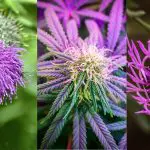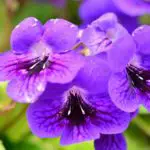Last Updated on December 14, 2022 by Derek
Popular Chinese Plants List
- Plum Blossom (Prunus mume)
- Jade Plant (Crassula ovata)
- Bromeliad (Bromeliaceae)
- Chinese Ground Orchid (Bletilla striata)
- Pilea (Pilea peperomioides)
- Money Tree (Pachira aquatica)
- Chrysanthemums
- Magnolias
- Osmanthus fragrans
- Bok Choy
- Peony
What is the most popular plant in China?
Bamboo is very common in China. In fact, China is home to 500 of the world’s 1000 species! Bamboo is very versatile and can be used for construction, decorations, for medical purpose and the tender shoots can be eaten – pandas eat almost nothing else.
It enjoys a long growing season with higher temperatures and plenty of moisture. In this kind of habit most varieties grow very fast indeed, up to 60 cms. Dense bamboo forests make up about 5% of Chinese forests.
Some species can reach a height of 30 meters, while other dwarf varieties barely grow to 1 meter high. They flower sporadically, when they’re ready it seems, and then they die.
What are famous Chinese flowers?
5 of the most famous Chinese flowers are:
- Peony
- Orchid
- Lotus Blossom
- Chrysanthemum
- Hibiscus
Chinese plant symbolism
The names of flowers in China have other meanings and are often associated with poets. A flower may signify good luck, or romance or wealth – in some cases used to promote healing or happy marriage.
Lotus flowers, for example, are beautiful to look at floating in ponds and lakes, and are closely linked with the Buddha. The association brings images of peace and tranquility.
What is China’s national plant?
The Plum blossom was officially named China’s national plant in 1964. It’s typical of the Chinese people’s character – appealing and delicate looking but hardy, withstanding quite severe winters.
During the Qing dynasty the vivid red Peony was the national flower. Many others are considered regional favorites.
Video – 10 plants important in the Chinese culture
What plants are native to China?
Due to its large land mass, China spans several climate zones. These range from continental and temperate zones in the north, to humid, subtropical region in the south.
Some provinces are even home to dense, tropical vegetation and forests. In fact, China boasts climates that are suitable for all kinds of plants, including wetland and pond species.
Chinese plants and flowers
Almost every major group of plants is represented in China, from evergreen trees like the Chinese Cypress, to succulents like the Chinese Money Plant. In addition, there are also a great many plants that either reach their highest diversity in China or are indigenous. A great example of one such plant is Bamboo.
What are considered Chinese vegetables?
In the west, the most widely known Chinese vegetable is probably the Water chestnut. This marsh plant produces edible corms, which are essentially a thickened base to each stem, making it an important food crop. You can find Water Chestnuts in many Chinese dishes, and they are feature of menus in Chinese restaurants around the world.
Chinese also produces a wide range of green vegetables however, such as Bok Choi. Also known as Pak Choi, Bok Choi is a type of cabbage that has thick white stems at the bottom of its leaves that make up the bulk of its mass.
Plum Blossom (Prunus mume)
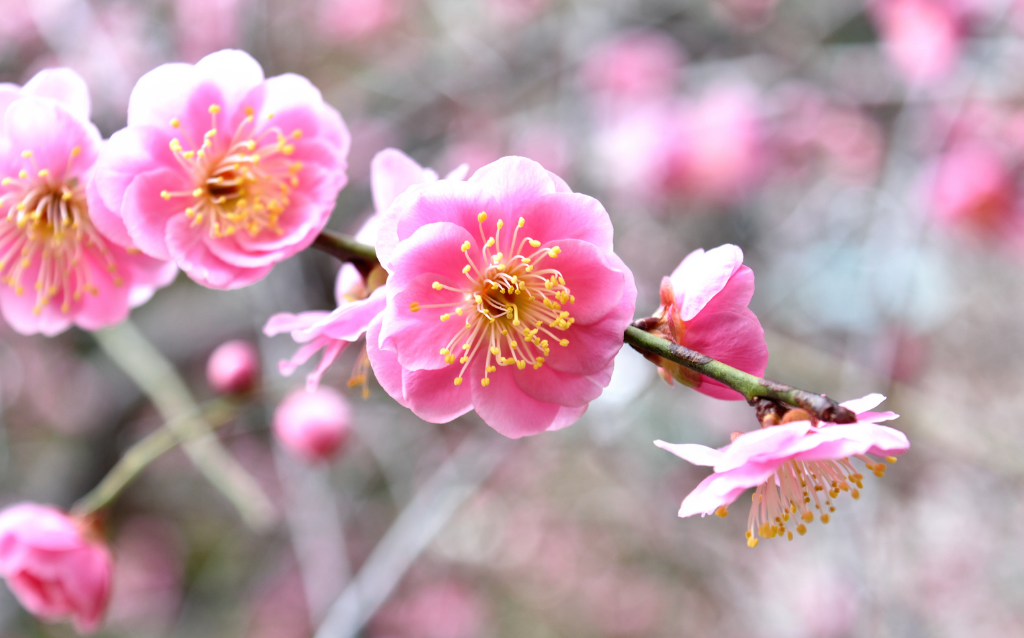
The blossom of the Chinese plum tree is considered to represent the resilience of the Chinese people as it blooms well in wintry conditions and looks as beautiful as ever during the harshest January.
The Plum Blossom grows up to 10 metres high and its five petaled flowers bloom in delicate colours of red, pink white and yellow. The scent is fragrant and delicate.
Chinese fruit symbolism
The fruit of the plum is more like an English apricot and is used for flavoring alcohol, medicinal uses, pickling and for creating sauces. The blossom is legendary in Chinese folk-lore and is mentioned by many poets recounting sad romantic sagas in involving unrequited love and the karma of destiny. Chinese flower names often have meaning.
Jade Plant (Crassula ovata)
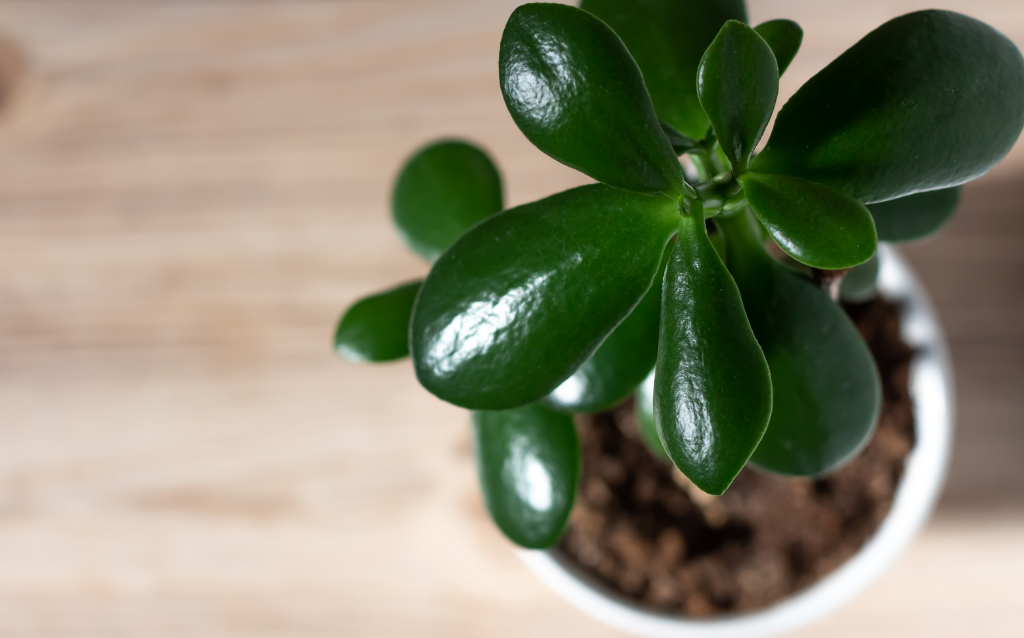
The Jade plant is a miniature tree in its appearance and is often grown indoors in pots. Its leaves retain water, typical of all succulants, such as cactus and alloe vera.
Give the Jade plant lots of sun and light, and it will live a long time. It can be kept outdoors in a pot as long it’s brought inside in the frosty weather.
It looks like a bonsai tree, with shiny dark oval shaped leaves and thickish trunk and branches. Give it plenty of light and it may reward you with pink and white flowers. Jade plants are quite easy to grow but some people have difficulty getting them to bloom at all.
Bromeliad (Bromeliaceae)
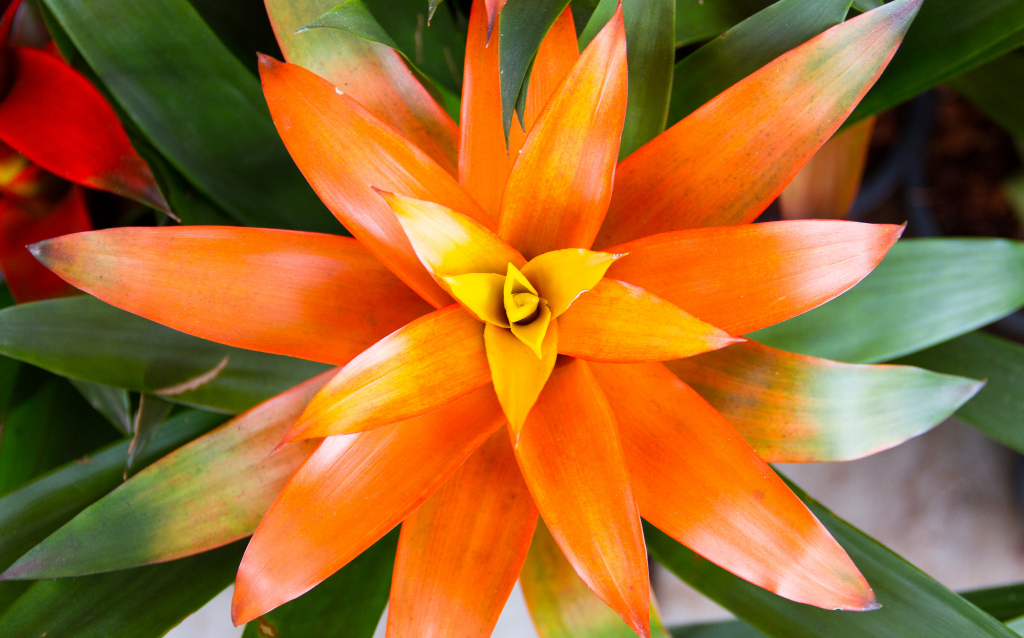
Most bromeliads thrive in tropical climates, where the conditions are humid and warm – warm, wet and sdhady is ideal. If it doesn’t freeze in your location, you can plant it somewhere sheltered without direct sunlight.
Bromeliads can live in drier conditions, if misted and kept moist. Some varieties are easier than others in this respect. Container growing is recommended, so it can be brought inside during winter months. They are a great indoor plant anyway, with few insect pests and they are also disease resistant.
Bormeliads can withstand drought conditions and really don’t like being over-watered. The roots will rot if left in standing water.
Chinese Ground Orchid (Bletilla striata)
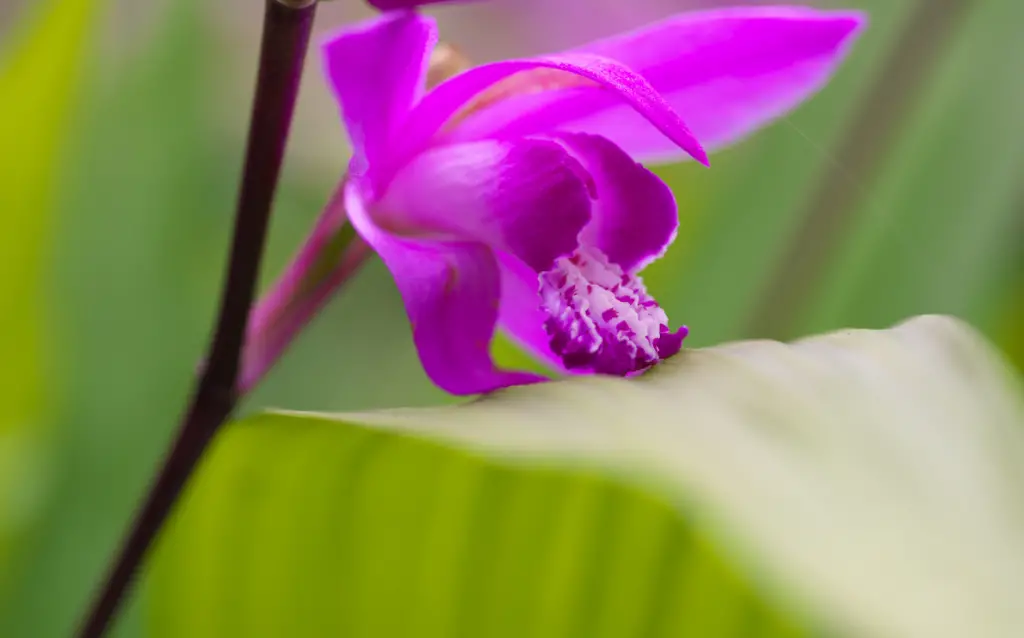
This orchid also grows natively in Japan, Korea and Myanma. Its foliage grows quickly in early spring, giving way to flower spikes later on in the season and each flower spike may have 5 seperate blooms.
Chinese Ground Orchid likes plenty of sunshine and rich soil with good drainage. If grown in a garden, it needs protecting from frost, but aprt from that, they are easy to grow.
Fragrant Chinese flower
Chinese Ground Orchids are easy to grow and look great planted either grouped together and to form a border along a pathway, for example. Grow them inside if you, in pots or containers, but make sure they get some sun.
It’s easy to harvest the flowers of Chinese Ground Orchid for indoor flower arrangements. They last a long time, with colorful blooms and a pleasant frangrance.
Pilea (Pilea peperomioides)
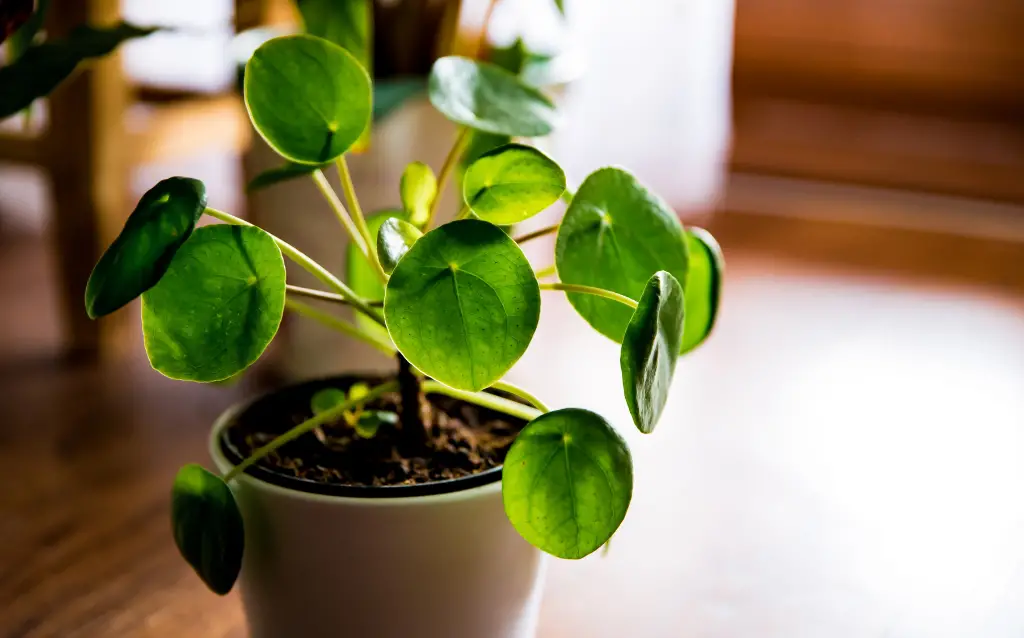
Known as the Chinese Money Plant, Pilea peperomioides grows coin-shaped leaves on long stalks. Native to Yunnan Province in Southern China, it’s a meber of the sting nettle family. This type of plant has leaves covered in little hairs – some sting while others are merely irritants, either to the skin or breathing passages.
It isn’t visually exciting but is easy to keep and creates a nice ambience, I find, sitting in it’s pot on a window ledge. They are cute rather than beautiful but it’s definitely in the eye of the beholder.
Pilea didn’t find its way out of Chinas until the 1940s, when cuttings were taken and the plant gradually spread through the homes of Scandinavia. Even now, they are not commonly found in graden centers and the easiest way to get one is to take a cutting fdrom a friend’s plant.
Money Tree (Pachira aquatica)
The Money Tree is also called the Malabar chestnut or Saba nut, and is well-liked for indoor gardeners for adding a touch of class to interior decor. It is supposed to bring money to the lucky owner, hence the name.
The China Rose
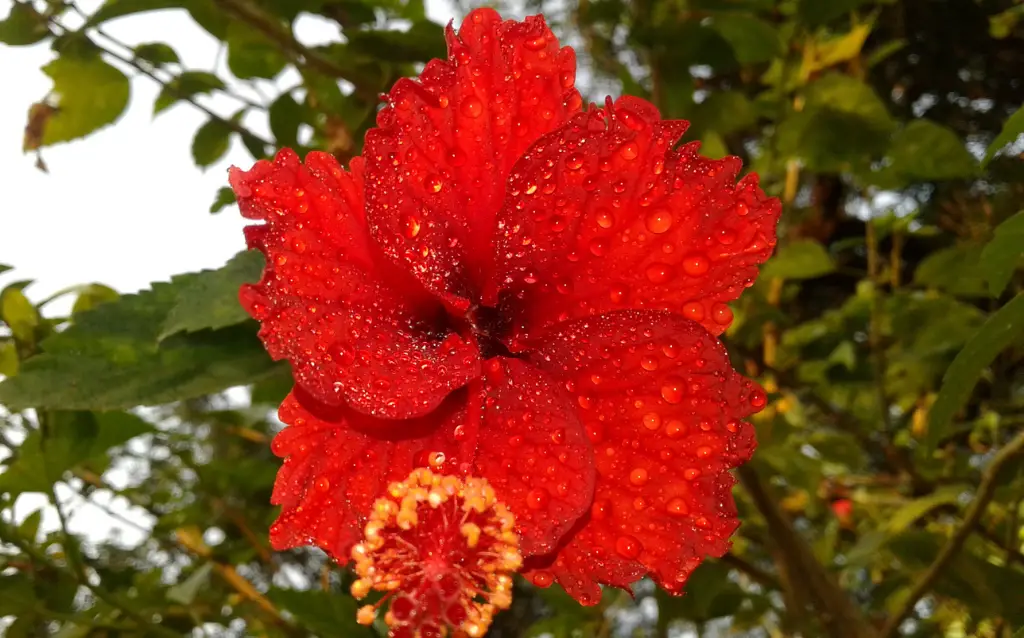
The China Rose (Rosa chinensis) is a species of pink or red rose native to China. Several cultivars exist, and it is said that it is also one of the main ancestors of many European varieties.
Like other Roses, this species needs regular pruning, well-drained soil, and full sun. if given these conditions, it will grow to a reasonable size, and become quite hardy over time. Notwithstanding, the main reward with cultivating this species is how prolific it is. If the weather is reasonable, the China Rose will flower constantly from spring to the end of autumn.
Chrysanthemums

Chrysanthemums are a genus of species belonging to the Daisy family, Asteraceae. As such, they have long, thin petals but these are numerous enough to make heavy flower heads. To date, roughly 40 species are recognized.
Though exclusively a Chinese plant, it is in China that the greatest number of these different species can be found. Not one of the rare Chinese flowers, Chrysanthemums are a symbol of longevity there and are also used in Chinese medicine.
Owing to the variety of cultivars available, you can find red, orange, white, pink, or yellow Chrysanthemums. Of these cultivars, some are frost resistant and perennial, whereas you must bring others indoors overwinter. It’s important to research this before planting.
Follow the link to learn about other Flowers that start with C.
Magnolias

A Magnolia is any species of small tree in the genus Magnolia, which itself belongs to the Magnoliaceae family. Like some of the other families referenced in this list, the Magnoliaceae comprises a hugely successful group of species. They can be found in the wild from Panama to Borneo but are most diverse in China.
Two defining characteristics are their long, flat leaves and their large white or pink flowers. Both of these points have made them extremely popular in gardens around the world, and they take easily to all but the coldest climates.
Osmanthus fragrans

Confusingly, this shrub species has several common names. These include Sweet Olive, Tea Olive, and Sweet Osmanthus.
As most of its names imply, it is a member of the Olive family, Oleaceae. Growing from the central China all the way to south-east Asia, the Sweet Olive can easily reach heights of 20 feet (6m) or more after a few years.
As a shrub, you can of course prune it to keep it smaller. Just bear in mind that it should only be pruned in February or early March in the Northern Hemisphere.
If planted in suitably fertile soil, Osmanthus will bloom heavily in late autumn with small white or yellow flowers. These give it value as an ornamental, but their intensely sweet odour makes it truly exceptional. In fact, most growers plant the Sweet Olive as much for its smell as its appearance.
Bok Choy
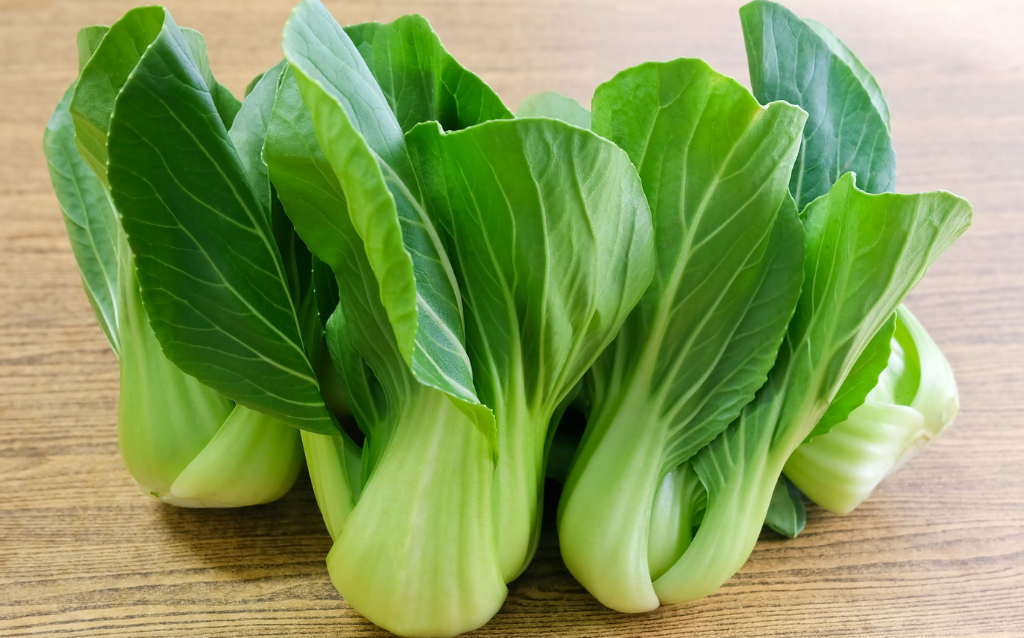
A familiar ingredient in Chinese cuisine, Bok Choy (also known as Pak Choy) is now widely available in the west and elsewhere. Though it is a cabbage, it has a slightly different shape to most varieties. The stems and midribs are white and extremely thick at the base of the leaves, making the bulk of the plant’s weight. The upper half of the leaves are thin, green, and blade-like.
Bok Choy is a cold weather vegetable and will even survive moderate frost. For best results, plant it in late summer and it will continue to grow through winter.
Peony
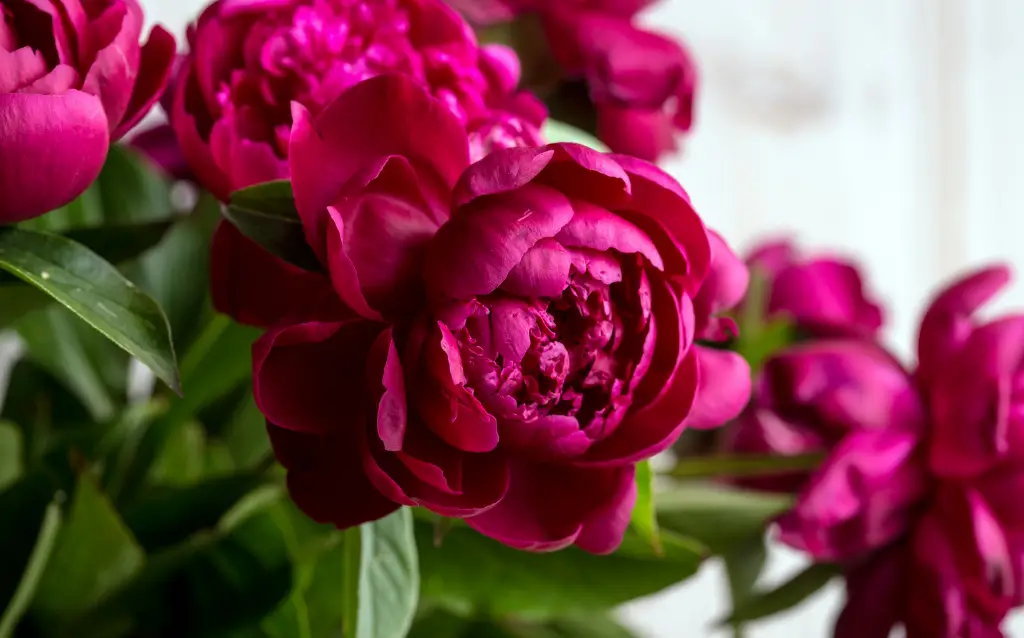
Peonies belong to a single genus called Paeonia, in their own family: the Paeoniaceae. Though this means they are slightly less diverse than some groups of flowers, they are still comprised of over thirty species. Of these, several are grown in China where their popularity is huge.
To this day, in fact, Peonies represent wealth in Chinese culture. Most peonies grow well no matter where you are in world. Being perennial, some varieties can even be grown into small trees.
Chinese indoor plants list
- Lucky Bamboo
- Calamondin Orange
- Jade Plant
- Chinese Sacred Lily
- Pussy Willow
- Chinese Money Plant
- Orchids
- Pomelo
- Nipplefruit
- Peach Blossoms
Best Chinese plants outdoor
- Spirea
- Azalea
- Olive
- Chrysanthemums
- Magnolia
- Chinese Flowering Quince
Other resources relating to Chinese plants:
25 Lucky Plants And Flowers To Buy For Chinese New Year
Five Famous Flowers’ in Chinese Culture – Chinosity







